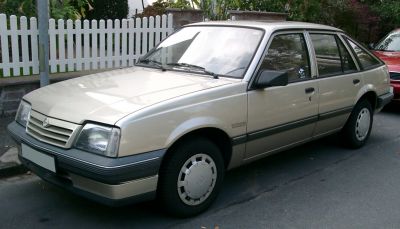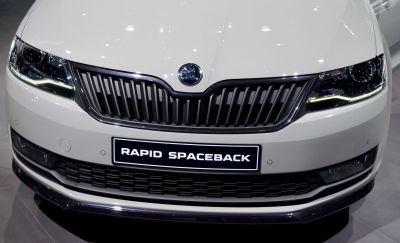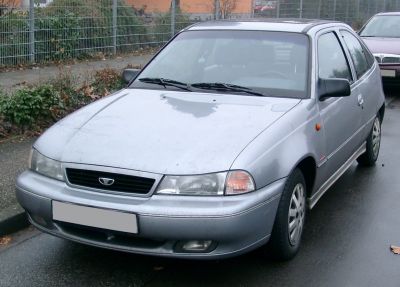 1988 Mitsubishi Lancer IV Hatchback Dimensions, Size & Specs
1988 Mitsubishi Lancer IV Hatchback Dimensions, Size & SpecsMeasurements of the 1988 Mitsubishi Lancer IV Hatchback, engineered for optimal performance and comfort
| Dimensions | |
|---|---|
| Length: | 4235 mm166.7 in13.9 ft |
| Width: | 1670 mm65.7 in5.5 ft |
| Height: | 1405 mm55.3 in4.6 ft |
| Trunk Capacity: | 320 liter11.3 cu ft |
| Trunk Capacity (Max): | 950 liter33.5 cu ft |
| Weight Specifications | |
| Curb Weight: | 920-1105 kg2028-2436 lbs |
| Maximal permitted Weight: | 1520 kg3351 lbs |
| Tire Specifications | |
| Tire Sizes: |
|
The 1988 Mitsubishi Lancer IV Hatchback marks an important generation of the popular compact hatchback, produced between 1988 and 1994. This vehicle features a practical design optimized for urban and suburban driving, blending compact exterior dimensions with efficient use of cargo space. Measuring 4235 mm (166.7 inches) in length, 1670 mm (65.7 inches) in width, and standing 1405 mm (55.3 inches) tall, the Lancer IV Hatchback offers a balanced footprint, making it easy to maneuver and park while providing sufficient interior space for passengers and luggage.
Weighing between 920 to 1105 kg (2028 to 2437 lbs), its curb weight supports fuel efficiency and agile handling, while the maximum permissible weight reaches up to 1520 kg (3351 lbs), accommodating passengers and cargo comfortably. The hatchback layout enhances practicality with a standard luggage capacity of 320 liters (11.3 cubic feet), which expands significantly to 950 liters (33.5 cubic feet) when the rear seats are folded, making it versatile for everyday needs from grocery runs to weekend trips.
The car rides on tire sizes ranging from 155/80 R13 to 175/70 R13, contributing to a stable yet responsive road feel typical of vehicles in this segment during its era. Overall, the Mitsubishi Lancer IV Hatchback blends compact size with commendable space and functionality, retaining its charm as a reliable and efficient hatchback from the late 1980s through the mid-1990s.
Discover the standout features that make the 1988 Mitsubishi Lancer IV Hatchback a leader in its class
Have a question? Please check our knowledgebase first.
The Mitsubishi Lancer IV Hatchback, produced from 1988 to 1994, measures 4235 mm (166.7 inches) in length, 1670 mm (65.7 inches) in width, and 1405 mm (55.3 inches) in height. These dimensions place the model solidly in the compact hatchback category, offering a balanced footprint suitable for urban and suburban driving, while providing adequate interior room and maneuverability.
The curb weight of the Mitsubishi Lancer IV Hatchback ranges between 920 and 1105 kg (2,028 to 2,437 lbs), depending on the variant and equipment levels. Its maximum permissible weight is 1520 kg (3,351 lbs). This weight range reflects a lightweight and efficient hatchback ideal for everyday use, contributing to its fuel efficiency and agile handling.
The Mitsubishi Lancer IV Hatchback provides a practical luggage capacity of 320 liters (approximately 11.3 cubic feet) with the rear seats in their upright position, suitable for daily errands or grocery runs. When the rear seats are folded down, the luggage capacity expands significantly to 950 liters (about 33.5 cubic feet), allowing for larger or bulkier cargo, making it versatile for trips or transporting larger items.
Yes, the Mitsubishi Lancer IV Hatchback fits comfortably into a standard garage. With a length of 4235 mm (166.7 inches), width of 1670 mm (65.7 inches), and height of 1405 mm (55.3 inches), it is compact enough to easily park in most single-car garages found in residential homes. Its manageable dimensions allow good clearance around the vehicle, facilitating easy parking and maneuvering.
At 1670 mm (65.7 inches) wide, the Mitsubishi Lancer IV Hatchback offers a narrow profile by modern standards, contributing to its nimble handling characteristics on tight city streets and winding roads. While the narrower width may slightly limit interior shoulder room compared to wider hatchbacks, it enhances drivability and ease of parking, a key advantage for urban drivers.
The Mitsubishi Lancer IV Hatchback originally came equipped with tire sizes 155/80 R13 or 175/70 R13, depending on trimming and model year. The smaller 13-inch wheels and relatively narrow tires contribute to a comfortable ride with more cushioning over road imperfections, though they may limit high-speed cornering grip compared to larger, wider tires. These tires also help keep running costs lower.
With a height of 1405 mm (55.3 inches), the Lancer IV Hatchback strikes a balance between maintaining a low aerodynamic profile that aids fuel efficiency and providing sufficient headroom for occupants. The streamlined height helps reduce drag, improving highway fuel economy, while the interior height is generally comfortable for most passengers, contributing to an overall practical hatchback design.
Compared to the previous Lancer III generation, the Lancer IV Hatchback saw some modest changes in dimensions. Generally, the Lancer IV maintained a similar length and height but could feature a slightly refined width and weight improvements aimed at better fuel efficiency and performance. The evolution focused on improving interior space utilization and driving dynamics without drastically changing the car's footprint.
In comparison to contemporaries like the Honda Civic and Toyota Corolla hatchbacks from the late '80s to early '90s, the Mitsubishi Lancer IV Hatchback held its own with competitive dimensions and practical luggage capacity. While its overall length and width were similar, its lighter curb weight and efficient use of space made it a well-rounded choice. It balanced performance, economy, and interior versatility effectively against its rivals.
Produced between 1988 and 1994, the Mitsubishi Lancer IV Hatchback was admired for its compact size, fuel efficiency, and practicality. It catered well to those seeking a reliable, affordable hatchback with decent luggage space and easy maneuverability. The vehicle's lightweight and straightforward design contributed to its popularity in urban environments, and its balance of size and performance appealed to younger drivers and small families alike.
Discover similar sized cars.

| Model Year: | 1982 |
|---|---|
| Length: | 4264 mm167.9 in |
| Width: | 1668 mm65.7 in |
| Height: | 1385 mm54.5 in |

| Production: | 2017-2019 |
|---|---|
| Model Year: | 2017 |
| Length: | 4304-4312 mm169.4-169.8 in |
| Width: | 1706 mm67.2 in |
| Height: | 1459-1475 mm57.4-58.1 in |

| Production: | 2013-2017 |
|---|---|
| Model Year: | 2013 |
| Length: | 4304 mm169.4 in |
| Width: | 1706 mm67.2 in |
| Height: | 1459 mm57.4 in |

| Production: | 1995-1997 |
|---|---|
| Model Year: | 1994 |
| Length: | 4256 mm167.6 in |
| Width: | 1662 mm65.4 in |
| Height: | 1394 mm54.9 in |
